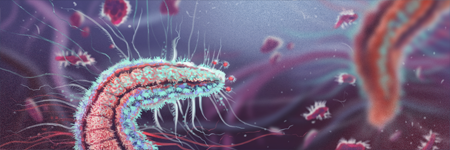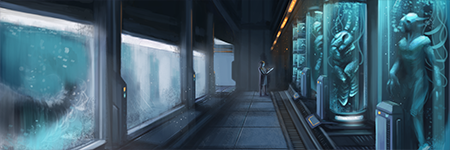Event chains
Anomaly Events
Colony Events
Early Story Events
Observation Events
Origin Events
Habitable Worlds Survey is the most common event chain in the game, happening to every empire that's not ![]()
Each Special Project requires a science ship and takes 180 days to complete.
Habitable Worlds Survey
We now know without a doubt that a thriving biosphere is not something unique to [homeworld name]. Both the scientific community and the public at large are eager to learn more about the various forms of alien life found throughout the galaxy.
Efforts to catalog the life forms we encounter are already underway, but our xenobiologists have urged us to focus our planetary survey efforts on habitable, life-bearing worlds.
Survey Completed
Through our surveys of habitable worlds, our biologists have collected a vast amount of data on alien life forms. Many of our older theories on the development of life have been disproved, and our scientific community has had to build new models from scratch!
Our most interesting findings are being displayed at the newly dedicated Museum of Exobiology on [capital name]. The public is enthralled, and many donations have come in to aid in the continued search of strange life forms.
Alien Specimen Procurement
The director of the Museum of Exobiology on [capital name] has issued a request for the procurement of several live alien specimens. These creatures were spotted on surveyed habitable worlds, but they are difficult to capture. It will require the full resources of a Science Ship for a lengthy period of time.
合併
觸發條件:
|
平均發生時間(MTTH):
120 months |
We will gather these specimens.
No, we don't have the resources to space | |
Goolantha Herd SecuredGoolanthas are large, flat herbivores that have evolved internal gas pockets, enabling them to hover a few centimeters above the ground. They move about in herds consisting of a few dozen animals, grazing on the moss and lichen that can be found on the windswept plains of [special project planet name]. They are ruthlessly hunted by the [planet or moon]'s apex predators, and our biologists on the [science ship name] estimate that only a few hundred goolantha herds remain. One of these, consisting of nine animals, has been successfully collected and will be brought back to [capital name]. |
Orinthi SecuredThe small, rodent-like creatures known as orinthi are native to [special project planet name], where their habitat extends across most of the [planet or moon]'s diverse climatic regions. They breed at an extremely rapid rate, and seem to have a particular fondness for chewing on electric cables. Procuring specimens was not a problem - in fact, after the initial creatures were collected, more of them made their way onto the [science ship name] by hitching rides on the Science Ship's orbital shuttles. Exactly why the Museum of Exobiology requested orinthi specimens remains a mystery. |
Sniran SecuredSnirans are large, burrowing creatures that live beneath the dunes of the vast equatorial deserts on [special project planet name]. When these predators sense movement in the sand above, they immediately raise dozens of tall spikes from their backs in the hope of impaling something edible. Finding a suitable specimen proved difficult at first, until hundreds of tracked remote-controlled drones were dispatched across the desert in random directions. This led to the discovery and procurement of an unusually large specimen that had grown more than a hundred spikes on its back. |
Tarblac SecuredAfter an extensive search of the seabed on [special project planet name] using a small fleet of mini-submarines, the crew of the [science ship name] finally managed to corner the elusive target of their search - a live tarblac. The shimmering creature, which defends itself by emitting faint psionic signals that produce a sense of dread in most organics, was brought aboard the Science Ship in a special water tank simulating its natural environment. The crew members on the [science ship name] that came into direct contact with the tarblac will require extensive therapy, but the mission has been a success. |
Tassargoid SecuredThe tassargoid is an extremely lethal predator that stalks the dense jungles of [special project planet name] at night, paralyzing its prey with electric shocks before sucking their brains out with its tube-like mouth. Unfortunately, three of the crew members from the [science ship name] were lost to these creatures before a specimen could be secured. The Museum of Exobiology on [capital name] will rename one of its wings after these brave officers to honor their sacrifice. |
Uddlorans SecuredThe crew of the [science ship name] has managed to collect a small group of uddlorans from the icy surface of [special project planet name]. These white, furry omnivores wrap themselves into tight balls and roll across the [planet or moon]'s snow fields at astonishing speeds - one animal was clocked at over 80 kilometers per hour. This aided in their detection, since the passage of their rolling forms kicks up huge plumes of swirling snow. |
Zulcor Swarm Secured
The zulcor are swarming insect analogues, unusual both for their large size and the fact that they are lithovores, feeding off rocks and minerals in the ground. One of the shuttles belonging to the [science ship name] sustained serious damage when it inadvertently passed through a large swarm and several zulcors began to feed on its hull.
The construction of the special containment facilities required to hold these creatures has already begun at the Museum of Exobiology on [capital name].
Specimens Secured
All of the specimens asked for by the Museum of Exobiology have been secured. The museum has grown to a massive facility, where artificial gravity generators and atmospheric processors are used to simulate the environments of over a dozen worlds.
Visitors are journeying from all across the [Divine Federation] to see its wonders!

